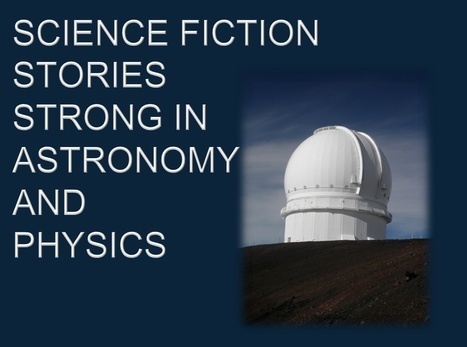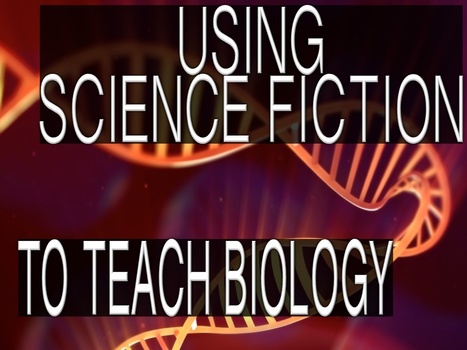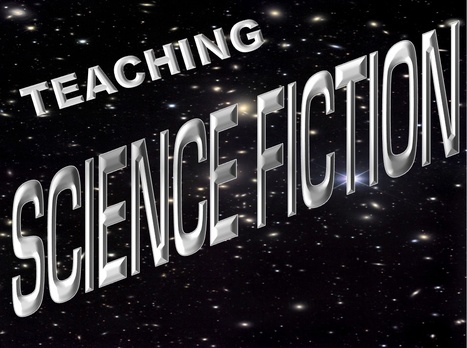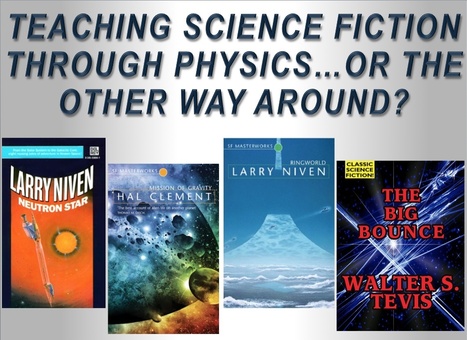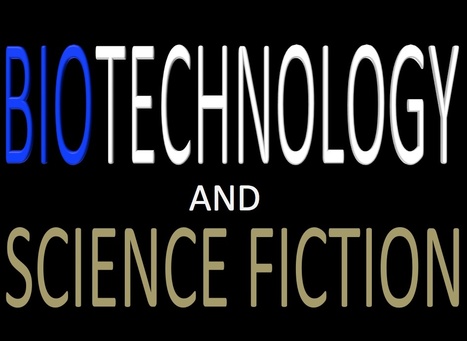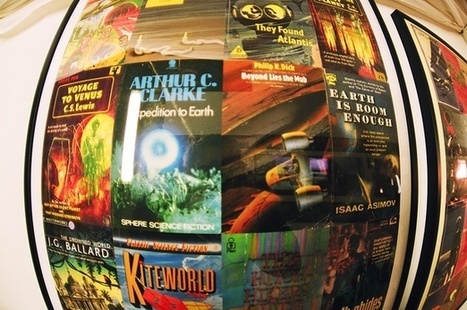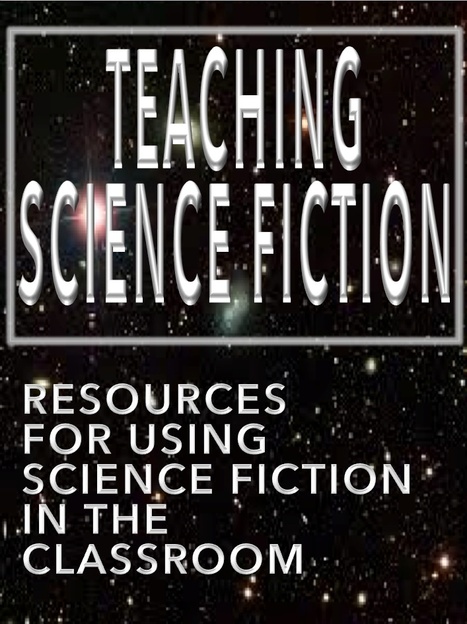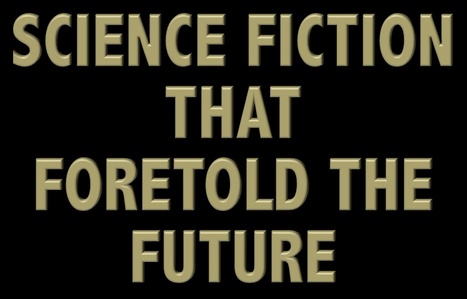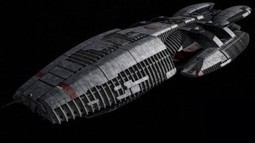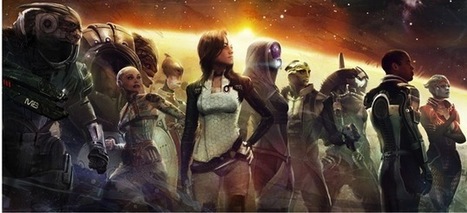 Your new post is loading...
 Your new post is loading...

|
Scooped by
GDBrin
|
A list compiled by Andrew Franknoi, of science fiction stories that can be used to illustrate topics such as black holes, anti-matter, dark matter, cosmology, quantum mechanics, quasars, comets, supernovae, thermodynamics, particle physics, or neutron stars.

|
Scooped by
GDBrin
|
Profesor Joan Slonczewski offers a biology curriculum that draws upon science fictionto explore concepts such as mutation, genetics, adaptation, and immortality. With suggested student projects.

|
Scooped by
GDBrin
|
Sci Fi legend and university professor James Gunn offers insights on teaching science fiction. The kinds of subjects that can be taught through SF involve social and physical sciences, history, ideas, futurology, religion, morality, ecology, reading skills, and many others. Gun's special project (which I have assisted) is the Center for Science Fiction at the University of Kansas... and especially the AboutSF Project. http://www.aboutsf.com/ About SF offers a database of resources for teachers seeking to use Science Fiction in the classroom. It also links to the new Speculation Speaker's Bureau which connects corporations, agencies and even local schools and libraries to either local or nationally known speakers on topics ranging from technology to literature to fantasy to films to the Shape of Things to Come!

|
Scooped by
GDBrin
|
Gregory Benford, Nebula Award-Winning Science Fiction author and physics professor at the University of California, Irvine, writes, "Mustering the fantastic in the cause of the real, or the reverse, can be useful teaching strategies. Illuminating physical law through science fictional thought experiments can awaken students’ inventive, playful side. Physics constrains action in ways that call up further study of the underlying physical laws." Benford discusses the use of Niven's Neutron Star and Ringworld, as well as Hal Clement's Mission of Gravity and Walter Tevis' The Big Bounce to present concepts of physics to students.

|
Scooped by
GDBrin
|
Author Brian Stableford discusses the forward-looking technology of science fiction, presented in the works of authors such as Charlotte Parkins Gilman , H.G. Wells, James Blish and Aldous Huxley. In many of these works, advances in biotechnology play a key role in shaping human society -- from cloning tissues to extending the human lifespan, from conquering disease to altering the intelligence of animals, from creating monsters to melding the human mind to machine. Speculative literature has provided a laboratory for exploring the ramifications -- good and bad -- of possible innovations in biotechnology.

|
Scooped by
GDBrin
|
Author Julie Czerneda is one of those who have labored to create materials useful to teachers and librarians using "the good stuff" to entice bright young minds. Here you will find her article, "Why use Science Fiction," as well as classroom resources and anthologies of stories.

|
Scooped by
GDBrin
|
Movies can captivate kids' attention -- and they can be used to illustrate basic science concepts in the real world. From Apollo 13 to The Right Stuff, from Lorenzo's Oil to Awakenings, from Contact to Gattaca, historical and science fiction films can be used pique student's interest.

|
Scooped by
GDBrin
|
How can science fiction inspire - and illustrate - the teaching of science? This series of interviews addresses the complicated relationship between science fiction and science - for good science fiction doesn't always portray good science, especially in Hollywood films.

|
Scooped by
GDBrin
|
Time travel is still a mystery, but it's probably safe to say these seven sci-fi stories totally missed the mark.

|
Scooped by
GDBrin
|
We describe a one‐quarter seminar course on ’’Modern Physics through Science Fiction.’’ This course is designed as a supplement to the conventional introductory series of physics courses taken by undergraduates in the biological sciences.

|
Scooped by
GDBrin
|
This material is part of the NASA document, Space Educator's Handbook. Students will sketch and analyze science fiction rockets, robots found in movies, comics or novels. Ask the students to find: (1) What technology exhibited by these sci-fi devices is currently possible? (Study existing technology - space shuttles, space stations, lasers, robots - similar to the selected items.) (2) What is probably not possible with today's technology? (3) What new technology is needed to make the science fiction devices work? (4) Finally, for extra credit, design (add to the original sketch) items overlooked by the science fiction author or artist that should have been included to make the science fiction device work.

|
Scooped by
GDBrin
|
No Limits: Developing Scientific Literacy Using Science Fiction, by Julie E Czerneda. is a resource for teachers seeking to use science fiction in the classroom to illustrate concepts of science.

|
Scooped by
GDBrin
|
Teaching Science Fact with Science Fiction eBook: by Richard Raham. Offers resources and suggestions for using the literature of science fiction to teach concepts in the physical sciences, mathematics and history for a variety of grade levels.
|

|
Scooped by
GDBrin
|
MIT researchers Dan Novy and Sophia Brueckner argue that the mind-bending worlds of authors such as Philip K. Dick and Arthur C. Clarke can help us not just come up with ideas for new gadgets, but anticipate their consequences. Science fiction can be used to inspire a new generation to think about the technologies of the future.

|
Scooped by
GDBrin
|
he popularity of books such as The Physics of Star Trek is making lecturers and teachers consider a new way of teaching science - through blockbuster movies. Science fiction movies are well known for breaking physical laws, and although Scotty, the chief engineer on Star Trek, frequently protested that he "could not break the laws of physics", the spaceship itself frequently did. This has not stopped books that explain the physics behind the series becoming extremely popular.

|
Scooped by
GDBrin
|
A collection of articles about: Using Science Fiction in the Classroom to motivate and inspire students, and increase literacy skills.

|
Scooped by
GDBrin
|
What science fiction themes do you apply to real-life science lessons? Are there books you use to convey a scientific idea in an accessible and relatable way?

|
Scooped by
GDBrin
|
What was sci-fi yesterday is reality today, as innovations once only in movies have become commonplace technology. From Google's Think Insights.

|
Scooped by
GDBrin
|
How can we use science fiction, zombies and comic books to help convey advanced science concepts to a non-science audience? It's easier than you might think. Zombies can be used to teach about virus outbreaks and infectious diseases. Superheroes can be used to teach about the forces of physics: how fast was Superman going? Asimov's works can be used to discuss what it means to be human...and how we might create artificial life. Star Trek can be used to discuss the limits of the physical universe and the speed of light. .

|
Scooped by
GDBrin
|
If science fiction ruled the world, time travel and teleportation would be commonplace, and humanlike intelligent machines and cyborgs would be walking amongst us. But just how likely are these and other far-out ideas? A look at Faster-than-lightspeed travel, invisibility cloaks, tractor beams.. and the robopocalypse.

|
Scooped by
GDBrin
|
A sampling of short stories and other resources that can be used to teach science. For example, Tank Farm Dynamo has been used widely to teach some principles of physics; It illustrates ideas of micro-gravity, orbital dynamics and the problems of life support in outer space. The Giving Plague: Explores concepts of biology ranging from disease and symbiosis to safety of the blood supply, to the very nature of altruism.

|
Scooped by
GDBrin
|
How can popular movies be used to address issues of scientific illiteracy? This NSTA paper discusses the advantages and challenges of using science fiction movies and TV shows to introduce scientific concepts in an elementary classroom.

|
Scooped by
GDBrin
|
"Mass Effect is epic. It’s the product of the best parts of Star Trek, Star Wars, Battlestar Galactica and more with a protagonist who could be the love-child of Picard, Skywalker, and Starbuck. It’..." This article looks at the big concepts presented in the universe of Mass Effect: The Medium, The Message, The Philosophy.

|
Scooped by
GDBrin
|
An article by Becky Fisher, in the Journal of Research in Science Teaching.

|
Scooped by
GDBrin
|
The Physics of Star Trek, by Lawrence M. Krauss]. What warps when you’re traveling at warp speed? What is the difference between a wormhole and a black hole? Can astronauts tunnel through space? Are time loops really possible? Are the inventions of Star Trek feasible ...or phyiscally impossible? Krauss leads readers on a vivid voyage into the world of physics.
|

 Your new post is loading...
Your new post is loading...
 Your new post is loading...
Your new post is loading...




